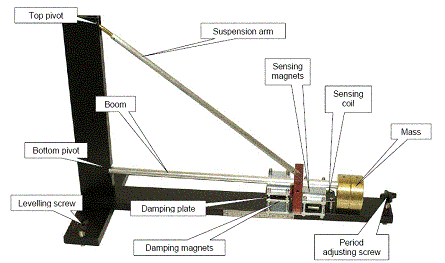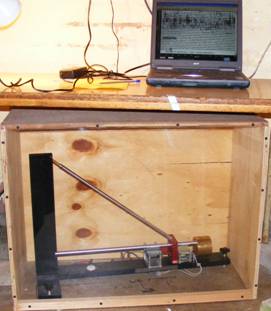Paulet Seismometer: code name PAUL.
Latitude 52.790 Longitude -1.616 Elevation 94 metres
Information about the Seismometer The Paulet seismometer is a SEP Seismometer System obtained through the Schools seismology Project. The SEP seismometer is based on what is often called a ‘garden gate’ design (since the boom can swing side to side). Due to the large inertia of the mass on the end of the boom, when seismic waves from an earthquake make the ground move relative to the recording device this large mass stays where it is as the ground moves beneath the seismometer, and this relative movement is recorded using the sensing magnets attached to the boom and sensing coil attached to the base of the seismometer. The relative movement of the magnets and coil induces an electrical signal in the coil. This signal is picked up in a connected amplifier and fed to a computer running Amaseis software which enables the signals to be recorded and analysed. The signals are displayed on the computer as a helicorder screen. (click here to see the current screen trace) When it is set up, the tilt of the seismometer is adjusted with the boom sloping slightly downwards, so that the boom oscillates with a period of about 20 seconds. The oscillation is damped magnetically. |
(c) Gatsby Science Enhancement Programme (reproduced with permission) |
Photograph of the Paulet seismometer in position
|
Left is a photograph of the Paulet seismometer in position, in the Geography storeroom (room B) It is placed in a draught proof enclosure to prevent oscillations due to draughts. The amplifier can just be seen behind the seismometer to the back of the box, this is connected to the laptop seen displaying the continuous helicorder display. The seismometer is sensitive to movement in and around the storeroom, so the signal looks quite noisy during the day.
Burton Mail Article : 28th February 2008 |

